Blog
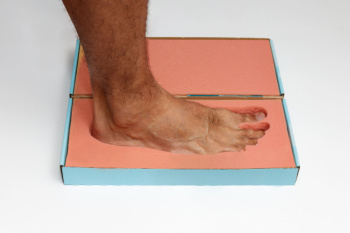
Custom-made foot orthotics are specially designed insoles that offer personalized support to the feet and lower limbs. By accurately matching the contours of an individual’s feet, these orthotics help to address a variety of lower limb conditions. They provide essential support that improves foot alignment, distributes pressure more evenly, and absorbs shock during movement. This can greatly reduce strain on the knees, hips, and lower back, which are often affected by poor foot mechanics. Conditions such as flat feet, plantar fasciitis, and heel pain can benefit from the stability and cushioning provided by custom orthotics. Additionally, individuals with overpronation or supination can experience relief as orthotics help guide the feet into proper alignment, preventing further complications. Overall, custom-made foot orthotics are a valuable tool in improving comfort, enhancing mobility, and reducing pain, offering long-term benefits for anyone that has lower limb discomfort. If you have general foot pain or any of the above conditions, it is suggested that you contact a podiatrist who can make a proper diagnosis and discuss the use of orthotics for relief.
If you are experiencing discomfort in your feet and would like to try custom orthotics, contact one of our podiatrists from Foot & Ankle Centers of Charlotte County . Our doctors can provide the care you need to keep you pain-free and on your feet.
What Are Custom Orthotics?
Custom orthotics are inserts you can place into your shoes to help with a variety of foot problems such as flat feet or foot pain. Orthotics provide relief and comfort for minor foot and heel pain.
Over-the-Counter Inserts
Shoe inserts come in a wide variety and are used to treat foot pain, heel pain, and minor problems. For example, arch supports can be inserted into your shoes to help correct overarched or flat feet, while gel insoles are often used because they provide comfort and relief from foot and heel pain by alleviating pressure.
Prescription Orthotics
If over-the-counter inserts don’t work for you or if you have a more severe foot concern, it is possible to have your podiatrist prescribe custom orthotics. These high-quality, custom inserts are designed to treat problems such as abnormal motion, plantar fasciitis, and severe forms of heel pain. They can even be used to help patients suffering from diabetes by treating foot ulcers and painful calluses and are usually molded to your feet individually, which allows them to provide full support and comfort.
If you're experiencing minor to severe foot or heel pain, it’s recommended to speak with your podiatrist about the possibility of using custom orthotics or shoe inserts. A podiatrist can determine which type of custom orthotic or shoe insert is right for you and help you take the first steps toward being pain-free.
If you have any questions please contact our offices located in Punta Gorda and Port Charlotte, FL . We offer the newest diagnostic and treatment technologies for all your foot and ankle needs.
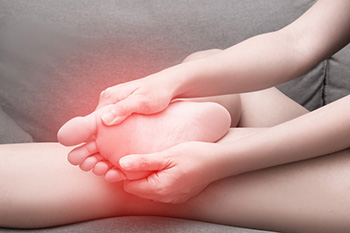
Foot pain can stem from a variety of factors, with improper footwear being one of the most common culprits. Wearing shoes that are too tight, too loose, or lack proper support can lead to a range of foot problems. One common condition caused by poor footwear is plantar fasciitis, where inflammation occurs in the band of tissue connecting the heel to the toes, causing heel pain. Corns, which are thickened areas of skin, can also develop from pressure or friction from ill-fitting shoes, leading to discomfort. Ingrown toenails, another frequent cause of foot pain, occur when a toenail grows into the surrounding skin, causing irritation and swelling. Achilles tendonitis is an overuse injury affecting the tendon at the back of the heel, causing pain and stiffness, especially during physical activities. Proper footwear, regular foot care, and addressing these issues early can help alleviate foot pain and prevent further complications. If you have any type of foot pain, it is suggested that you contact a podiatrist who can offer you a proper diagnosis and effective relief and treatment solutions.
Foot Pain
Foot pain can be extremely painful and debilitating. If you have a foot pain, consult with one of our podiatrists from Foot & Ankle Centers of Charlotte County . Our doctors will assess your condition and provide you with quality foot and ankle treatment.
Causes
Foot pain is a very broad condition that could be caused by one or more ailments. The most common include:
- Bunions
- Hammertoes
- Plantar Fasciitis
- Bone Spurs
- Corns
- Tarsal Tunnel Syndrome
- Ingrown Toenails
- Arthritis (such as Gout, Rheumatoid, and Osteoarthritis)
- Flat Feet
- Injury (from stress fractures, broken toe, foot, ankle, Achilles tendon ruptures, and sprains)
- And more
Diagnosis
To figure out the cause of foot pain, podiatrists utilize several different methods. This can range from simple visual inspections and sensation tests to X-rays and MRI scans. Prior medical history, family medical history, and any recent physical traumatic events will all be taken into consideration for a proper diagnosis.
Treatment
Treatment depends upon the cause of the foot pain. Whether it is resting, staying off the foot, or having surgery; podiatrists have a number of treatment options available for foot pain.
If you have any questions, please feel free to contact our offices located in Punta Gorda and Port Charlotte, FL . We offer the newest diagnostic and treatment technologies for all your foot care needs.
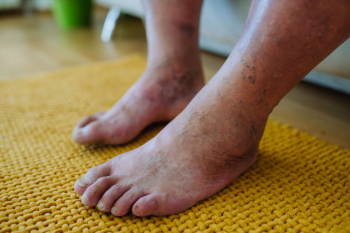
Foot care often gets overlooked with everything else diabetic patients manage, but it is vital. High blood sugar can damage nerves and reduce circulation, making feet prone to injury, infections, and slow healing. This can lead to serious complications like ulcers, or, in severe cases, limb loss. Daily foot checks are essential. Look for cuts, blisters, redness, or swelling. Proper shoes and socks matter, too. Choose breathable, cushioned options without seams to prevent friction. Keep toenails trimmed carefully, and never ignore any signs of infection or persistent pain. Controlling blood sugar levels plays a key role in maintaining foot health. If you have diabetes, it is strongly suggested that you regularly visit a podiatrist to ensure foot issues are caught early and managed effectively. A podiatrist can also recommend specialized footwear or treatments to keep your feet safe.
Diabetic foot care is important in preventing foot ailments such as ulcers. If you are suffering from diabetes or have any other concerns about your feet, contact one of our podiatrists from Foot & Ankle Centers of Charlotte County . Our doctors can provide the care you need to keep you pain-free and on your feet.
Diabetic Foot Care
Diabetes affects millions of people every year. The condition can damage blood vessels in many parts of the body, especially the feet. Because of this, taking care of your feet is essential if you have diabetes, and having a podiatrist help monitor your foot health is highly recommended.
The Importance of Caring for Your Feet
- Routinely inspect your feet for bruises or sores.
- Wear socks that fit your feet comfortably.
- Wear comfortable shoes that provide adequate support.
Patients with diabetes should have their doctor monitor their blood levels, as blood sugar levels play such a huge role in diabetic care. Monitoring these levels on a regular basis is highly advised.
It is always best to inform your healthcare professional of any concerns you may have regarding your feet, especially for diabetic patients. Early treatment and routine foot examinations are keys to maintaining proper health, especially because severe complications can arise if proper treatment is not applied.
If you have any questions please feel free to contact our offices located in Punta Gorda and Port Charlotte, FL . We offer the newest diagnostic and treatment technologies for all your foot and ankle needs.
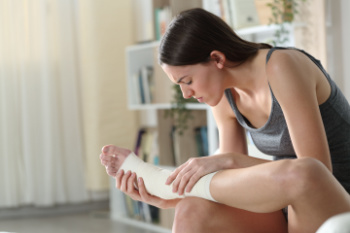
Stress fractures in the feet are hairline cracks in the bones that result from repetitive stress or overuse. Foot stress fractures often affect the second and third metatarsal bones, which endure significant pressure during activities like running, jumping, or pushing off the foot. Causes include repetitive high-impact movements, sudden changes in activity level or training surfaces, and improper footwear that fails to provide adequate support or cushioning. Wearing ill-fitting or unsupportive shoes can increase the strain on certain parts of the foot and contribute to the risk of developing stress fractures. Low bone density, poor nutrition, previous fractures, and conditions like osteoporosis are other risk factors. Symptoms of stress fractures include localized pain that intensifies with weight-bearing and improves with rest, along with swelling and tenderness in the affected area. A podiatrist can evaluate your symptoms, perform imaging tests, and recommend treatment options to ensure proper healing and prevent complications. If foot pain is interfering with your activities, it is suggested that you make an appointment with a podiatrist to determine if you have developed stress fractures.
Stress fractures occur when there is a tiny crack within a bone. To learn more, contact one of our podiatrists from Foot & Ankle Centers of Charlotte County . Our doctors can provide the care you need to keep you pain free and on your feet.
How Are They Caused?
Stress fractures are the result of repetitive force being placed on the bone. Since the lower leg and feet often carry most of the body’s weight, stress fractures are likely to occur in these areas. If you rush into a new exercise, you are more likely to develop a stress fracture since you are starting too much, too soon. Pain resulting from stress fractures may go unnoticed at first, however it may start to worsen over time.
Risk Factors
- Gender – They are more commonly found in women compared to men.
- Foot Problems – People with unusual arches in their feet are more likely to develop stress fractures.
- Certain Sports – Dancers, gymnasts, tennis players, runners, and basketball players are more likely to develop stress fractures.
- Lack of Nutrients – A lack of vitamin D and calcium may weaken the bones and make you more prone to stress fractures
- Weak Bones – Osteoporosis can weaken the bones therefore resulting in stress fractures
Stress fractures do not always heal properly, so it is important that you seek help from a podiatrist if you suspect you may have one. Ignoring your stress fracture may cause it to worsen, and you may develop chronic pain as well as additional fractures.
If you have any questions, please feel free to contact our offices located in Punta Gorda and Port Charlotte, FL . We offer the newest diagnostic and treatment technologies for all your foot care needs.
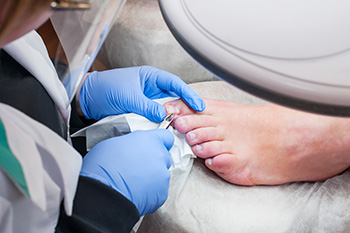
Ingrown toenails occur when the edges or corners of a toenail grow into the surrounding skin, leading to pain, swelling, and sometimes infection. Common causes of ingrown toenails include improper nail trimming, wearing tight footwear, or an inherited abnormal nail shape. In some cases, trauma or injury to the toe can also contribute to the condition. When conservative treatments, such as soaking the foot or using topical antibiotics, do not provide relief, surgery may be necessary to address the issue. There are different types of ingrown toenail surgery, with the most common being partial nail avulsion, where a portion of the nail is removed to relieve pressure and allow healing. Another procedure, known as matrixectomy, involves removing the nail root to prevent the ingrown toenail from recurring. If you have an ingrown toenail that is causing pain and discomfort, it is suggested that you consult a podiatrist who can discuss the benefits of this type of foot surgery.
Foot surgery is sometimes necessary to treat a foot ailment. To learn more, contact one of our podiatrists of Foot & Ankle Centers of Charlotte County . Our doctors will assist you with all of your foot and ankle needs.
When Is Surgery Necessary?
Foot and ankle surgery is generally reserved for cases in which less invasive, conservative procedures have failed to alleviate the problem. Some of the cases in which surgery may be necessary include:
- Removing foot deformities like bunions and bone spurs
- Severe arthritis that has caused bone issues
- Cosmetic reconstruction
What Types of Surgery Are There?
The type of surgery you receive will depend on the nature of the problem you have. Some of the possible surgeries include:
- Bunionectomy for painful bunions
- Surgical fusion for realignment of bones
- Neuropathy decompression surgery to treat nerve damage
Benefits of Surgery
Although surgery is usually a last resort, it can provide more complete pain relief compared to non-surgical methods and may allow you to finally resume full activity.
Surgical techniques have also become increasingly sophisticated. Techniques like endoscopic surgery allow for smaller incisions and faster recovery times.
If you have any questions please feel free to contact our offices located in Punta Gorda and Port Charlotte, FL . We offer the newest diagnostic and treatment technologies for all your foot and ankle needs.

Custom Orthotics help you not have to choose between style and comfort. With Custom Orthotics designed for high heels, you can walk with confidence, knowing your feet are supported. Custom Orthotics help distribute pressure evenly, reducing the risk of pain and discomfort. Whether it's a day at the office or a night on the town, make every step graceful and pain-free. Discover the magic of Custom Orthotics for high heels by calling our office today.
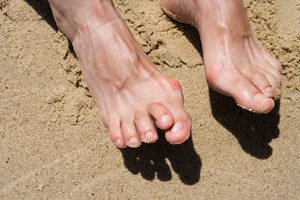
Hammertoe is a condition where one or more toes become bent at the middle joint, resembling a hammer-like shape. It typically affects the second, third, or fourth toes. The condition develops when the muscles and tendons in the toe become imbalanced, often due to wearing tight, ill-fitting shoes, genetics, or certain foot abnormalities. The primary symptoms of hammertoe include pain or discomfort, especially when walking or wearing shoes, along with visible deformity in the toe. Calluses or corns may also develop due to abnormal pressure points. Treatment for hammertoe depends on its severity. Early stages may be managed with non-surgical options like switching to proper footwear, using toe pads, or performing stretching and strengthening exercises. In more severe cases, a podiatrist may recommend surgery to correct the deformity. This type of doctor can provide a thorough evaluation and offer a tailored treatment plan to relieve pain and prevent further deformity. If you have this condition, it is suggested that you schedule an appointment with a podiatrist.
Hammertoes can be a painful condition to live with. For more information, contact one of our podiatrists of Foot & Ankle Centers of Charlotte County . Our doctors will answer any of your foot- and ankle-related questions.
Hammertoe
Hammertoe is a foot deformity that occurs due to an imbalance in the muscles, tendons, or ligaments that normally hold the toe straight. It can be caused by the type of shoes you wear, your foot structure, trauma, and certain disease processes.
Symptoms
- Painful and/or difficult toe movement
- Swelling
- Joint stiffness
- Calluses/Corns
- Physical deformity
Risk Factors
- Age – The risk of hammertoe increases with age
- Sex – Women are more likely to have hammertoe compared to men
- Toe Length – You are more likely to develop hammertoe if your second toe is longer than your big toe
- Certain Diseases – Arthritis and diabetes may make you more likely to develop hammertoe
Treatment
If you have hammertoe, you should change into a more comfortable shoe that provides enough room for your toes. Exercises such as picking up marbles may strengthen and stretch your toe muscles. Nevertheless, it is important to seek assistance from a podiatrist in order to determine the severity of your hammertoe and see which treatment option will work best for you.
If you have any questions, please feel free to contact our offices located in Punta Gorda and Port Charlotte, FL . We offer the newest diagnostic and treatment technologies for all your foot care needs.
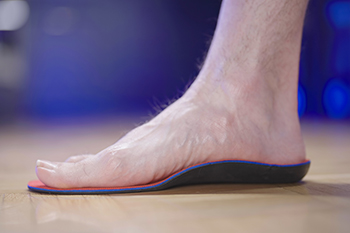
Plantar heel pain, commonly known as first-step pain, occurs when the tissue on the bottom of the foot becomes inflamed. The result is intense discomfort during the first steps after waking up or standing up after sitting for long periods. Custom foot orthotics are specifically designed to provide targeted support and cushioning, which can significantly reduce the pressure on the plantar fascia. By redistributing weight orthotics alleviate strain on the heel and surrounding tissues. Orthotics can also help with the alignment of the foot, reducing stress on the arches and providing better overall foot mechanics. Wearing custom orthotics regularly can promote healing, improve comfort, and prevent further injury, making them a valuable solution for those suffering from plantar heel pain. If you have heel pain, it is suggested that you consult a podiatrist who can discuss the benefits of custom orthotics.
If you are experiencing discomfort in your feet and would like to try custom orthotics, contact one of our podiatrists from Foot & Ankle Centers of Charlotte County . Our doctors can provide the care you need to keep you pain-free and on your feet.
What Are Custom Orthotics?
Custom orthotics are inserts you can place into your shoes to help with a variety of foot problems such as flat feet or foot pain. Orthotics provide relief and comfort for minor foot and heel pain.
Over-the-Counter Inserts
Shoe inserts come in a wide variety and are used to treat foot pain, heel pain, and minor problems. For example, arch supports can be inserted into your shoes to help correct overarched or flat feet, while gel insoles are often used because they provide comfort and relief from foot and heel pain by alleviating pressure.
Prescription Orthotics
If over-the-counter inserts don’t work for you or if you have a more severe foot concern, it is possible to have your podiatrist prescribe custom orthotics. These high-quality, custom inserts are designed to treat problems such as abnormal motion, plantar fasciitis, and severe forms of heel pain. They can even be used to help patients suffering from diabetes by treating foot ulcers and painful calluses and are usually molded to your feet individually, which allows them to provide full support and comfort.
If you're experiencing minor to severe foot or heel pain, it’s recommended to speak with your podiatrist about the possibility of using custom orthotics or shoe inserts. A podiatrist can determine which type of custom orthotic or shoe insert is right for you and help you take the first steps toward being pain-free.
If you have any questions please contact our offices located in Punta Gorda and Port Charlotte, FL . We offer the newest diagnostic and treatment technologies for all your foot and ankle needs.
Blog Archives
- 2025
- 2024
- 2023
- 2022


